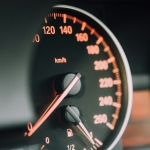The Cooling System
Cooling System:
Cooling system maintenance is preventive maintenance done to avoid an overheating situation and to avoid electrolysis (the breakdown of metals that occurs inside the engine block). Cooling system maintenance mileage varies by make and model. Maintenance is sometimes necessary before the mileage indicated in the owner’s manual. For example, if the manufacturer recommends a coolant flush at 150,000 miles, it could easily be flushed before that. If your coolant is repetitively low, there may be a leak. Leaks can occur at the water pump, heater core, hoses, radiator, and multiple locations throughout the engine.
The coolant is inspected at every oil change (about every 5,000 miles). When it is found to be dirty, then a cooling system flush is necessary. Typically the coolant gets dirty when non-distilled water is mixed with it. The impurities in the water cause
corrosion (breakdown of the metals in the engine), which collect with coolant. It can clog the radiator and cooling passages. Coolant is mixed with distilled water where these impurities are absent.
Never open the radiator while the engine is hot when checking the coolant at home.
How to flush the cooling system:
- Open the radiator drain to drain the cooling system and collect the drainage into a container (you can take this to your local auto parts store for recycling)
- Remove the thermostat. (It is typically on the engine side of the upper radiator hose. Refer to your manual.)
- Disconnect the lower radiator hose and force coolant through the thermostat housing (upper hose and engine block) with a garden hose until the water runs clear.
- Connect the garden hose to the radiator, and flush water through the radiator until the water runs clear.
- Thoroughly drain the cooling system of all the water.
- Reinstall the thermostat
- Disconnect the reservoir and flush it with the garden hose until the water clears. Completely drain the pool.
- Connect the hoses and close the drains.
- Fill the cooling system with new coolant and distilled water to the manufacturer’s specifications. Use a 50/50 mixture of coolant and distilled water or pre-mixed coolant.
Flushing the cooling system will not correct an overheating concern. If your vehicle is overheating (as indicated on the temperature gauge on the dash), it would need to be diagnosed and repaired.
Whenever you open the cooling system and put it back together, you want to pressure-test it to check for leaks. You can rent a pressure tester from a local auto parts store. The kit will come with detailed instructions. It (generally) connects to your radiator where the cap goes. Follow the instruction that comes with the pressure kit. If there is less pressure than before, there is probably a leak.













